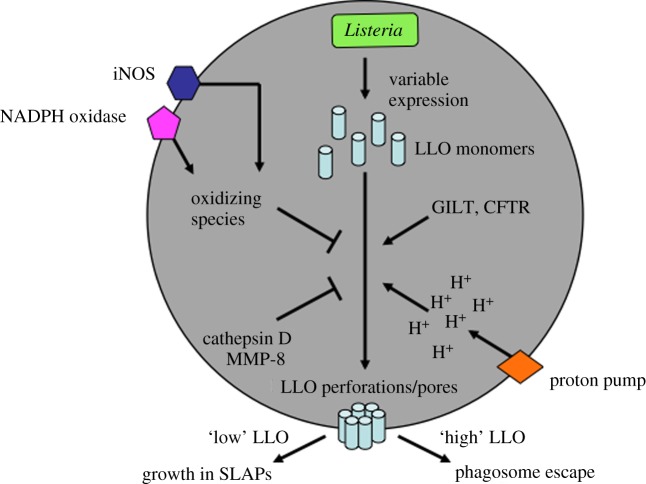Figure 1.
Factors impacting LLO activity in the phagosome. Individual Listeria monocytogenes produce and secrete variable amounts of LLO monomers, depending on many intrinsic and extrinsic factors they encounter prior to uptake by host cells. Thus, in the lumen of the phagosome, variable amounts of LLO have the capability of binding to cholesterol (and possibly other factors) on the luminal face of the phagosomal membrane. Before that binding can occur, many factors in the phagosome impact LLO. Reduction of LLO by GILT, chloride delivery to the phagosome by CFTR and acidification of the phagosome by the vacuolar ATPase (proton pump) all promote LLO activity. In contrast, oxidizing species generated by iNOS and the NOX2 NADPH oxidase and proteolytic cleavage of LLO by cathepsin D and MMP-8 all inhibit LLO activity in the phagosome. Together, all of these factors impact the amount (and likely also the type) of LLO activity at the phagosomal membrane. Relatively ‘high’ activity of LLO is thought to promote escape of bacteria from the phagosome, in combination with other bacterial and host factors (e.g. phospholipases). In contrast, ‘low’ activity of LLO has been shown to allow bacterial growth in phagosomes (SLAPs).

